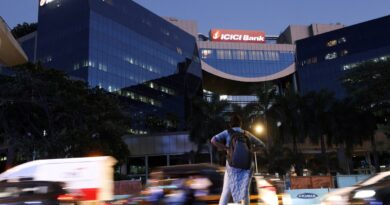Explained: Why India’s ‘fastest-growing’ economy needs faster job creation
By India Today Business Desk: India’s economy is set to register strong growth in the ongoing financial year and next, but creating more jobs remains crucial for the country to maintain momentum.
For India to become a developed nation, which requires an annual gross domestic product (GDP) growth of around 8 per cent for the next 25 years, meeting the employment needs of the growing population will be important.
Dhiraj Nim, an economist at ANX Research, told news agency Reuters that the biggest challenge for policymakers for achieving 8 per cent growth potential will be to “reallocate the surplus labour from agriculture to more productive sectors with gainful jobs in them.”
Also Read | India’s future prospects and three pillars of growth
“If India’s reform momentum is lacklustre, a less exciting picture is on the cards,” Nim added.
A poll of 53 economists this month showed that the economy would grow 6.1 per cent in the ongoing year, better than most other major economies in the world. “I think 6 to 6.5 per cent is a very achievable and a very conservative forecast for India’s growth trajectory,” Nim added.
But the growth has to be supported by strong job creation, according to experts. World Bank President Ajay Banga recently said the key to India’s growth story is creating more jobs, highlighting the opportunity to cash in on the “China Plus One” strategy, which is a scheme adopted by many companies to build their manufacturing capacities outside the country.
Also Read | Fitch raises India’s FY24 GDP growth forecast to 6.3%
Future job outlook
When the polled economists were asked about the employment outlook over the coming year, 17 of 25 said it will improve slightly.
Radhika Piplani, chief economist at DAM Capital Advisors, told Reuters that the unemployment situation has not improved yet, adding that skilling is also missing to some extent.
“So, there is a gap in terms of the demand versus the supply,” she said.
Also Read | India’s economy remains steady, resilient from global shocks: RBI Annual Report 2022-23
Twenty-one of 27 economists said the ambitious Production-Linked Incentive (PLI) scheme that aims to attract foreign manufacturers to set up shop in the country would provide a modest boost to GDP growth. The remaining six said it would have no impact.
“All the sectors where PLI has started are seen booming, but the actual impact of it on-the-ground employment – that is still something which is yet to be seen,” Piplani said.
While employment in India has improved after suffering a huge setback during the pandemic, it is not yet at the level that can steer India to become a developed nation, especially skilled jobs.
Focus on high-productivity jobs
Creating more jobs is crucial for India’s economic growth and stability. According to the World Bank, every 1 per cent increase in employment leads to a 0.6 per cent increase in GDP growth.
This indicates that job creation is beneficial not only for individuals but also for the economy as a whole.
As more people have jobs, there is an increase in the demand for goods and services, leading to the expansion of businesses and the creation of more jobs.
A report published by the McKinsey Global Institute in 2020, titled “India’s turning point: An economic agenda to spur growth and jobs,” emphasised the need to create at least 90 million new nonfarm jobs by 2030.
Also Read | India’s manufacturing PMI rises to 31-month high in May, boosts job growth
To achieve this, India’s GDP will need to grow by 8.0 to 8.5 percent annually over the next decade, the report added.
The report also highlighted the importance of moving towards higher-productivity sectors that have the potential to create more jobs. It identified the manufacturing and construction sectors as having the potential to achieve the largest acceleration in sector GDP growth.




